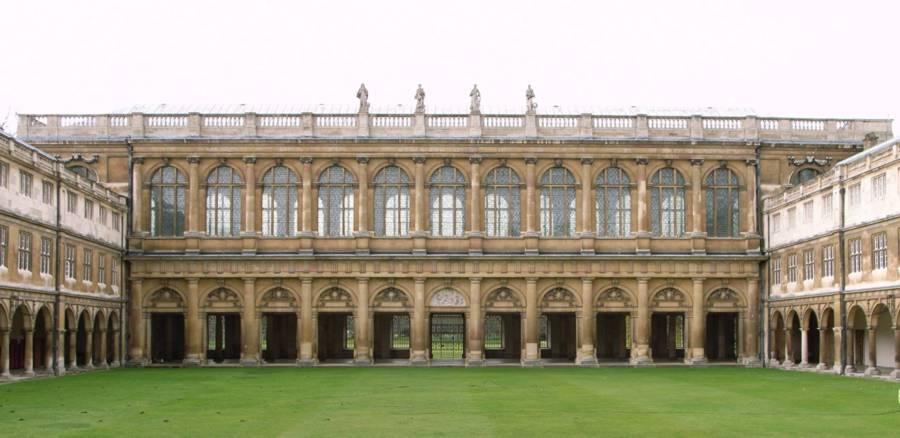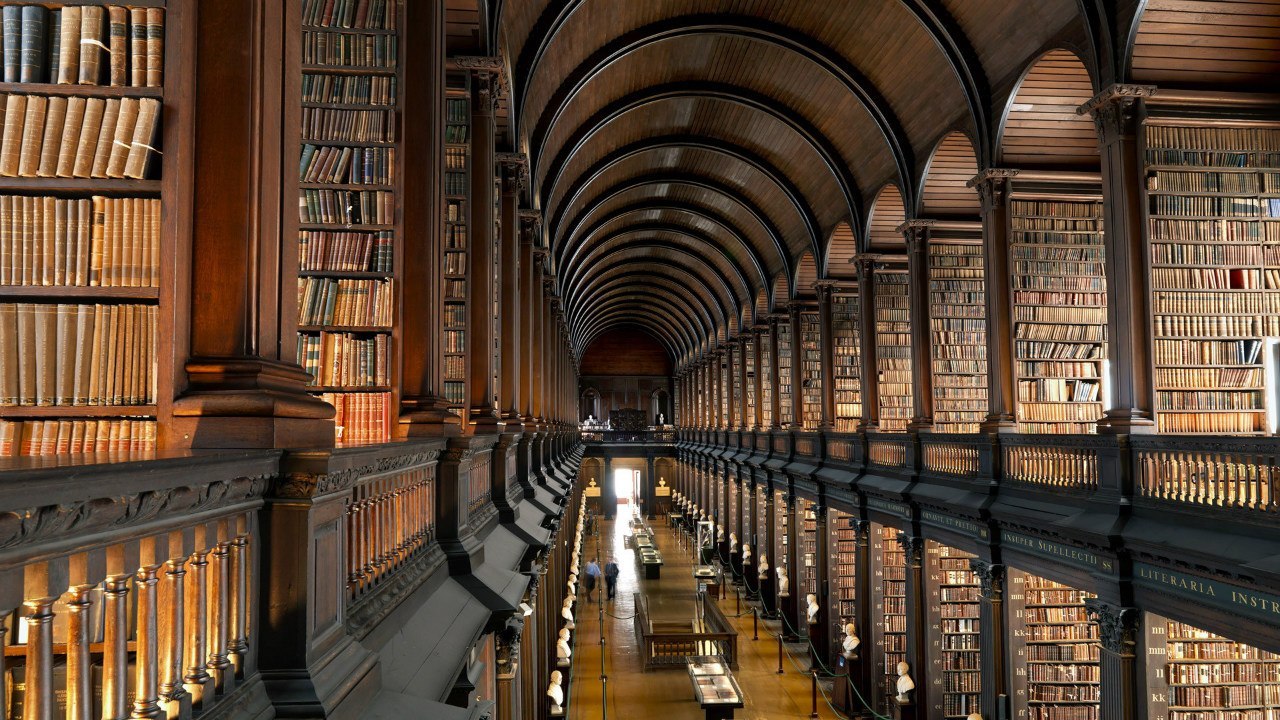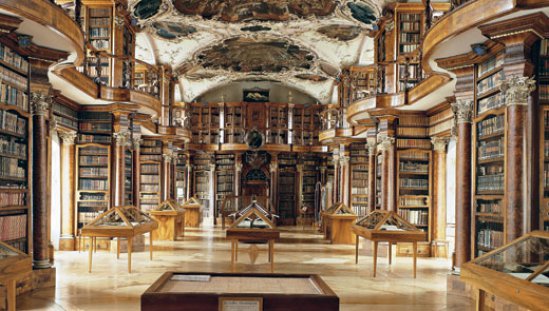Trinity College (Irish: Coláiste na Tríonóide), known in full as the College of the Holy and Undivided Trinity of Queen Elizabeth near Dublin, is a research university and the sole constituent college of the University of Dublin in Ireland. The college was founded in 1592 as the "mother" of a new university, modelled after the collegiate universities of Oxford and of Cambridge, but, unlike these, only one college was ever established; as such, the designations "Trinity College" and "University of Dublin" are usually synonymous for practical purposes. It is one of the seven ancient universities of Britain and Ireland,[8] as well as Ireland's oldest university.
Originally established outside the city walls of Dublin in the buildings of the dissolved Augustinian Priory of All Hallows, Trinity College was set up in part to consolidate the rule of the Tudor monarchy in Ireland, and it was seen as the university of the Protestant Ascendancy for much of its history. Although Catholics and Dissenters had been permitted to enter as early as 1793,certain restrictions on their membership of the college remained until 1873 (professorships, fellowships and scholarships were reserved for Protestants). From 1956 to 1970, the Catholic Church in Ireland forbade its adherents from attending Trinity College without permission from their archbishop. Women were first admitted to the college as full members in January 1904.
Trinity College is now surrounded by Dublin and is located on College Green, opposite the former Irish Houses of Parliament. The college proper occupies 190,000 m2 (47 acres), with many of its buildings ranged around large quadrangles (known as 'squares') and two playing fields. Academically, it is divided into three faculties comprising 25 schools, offering degree and diploma courses at both undergraduate and postgraduate levels. As of 2014, it was ranked by the Times Higher Education World University Rankings as the 138th best university in the world, by the QS World University Rankings as the 71st best, by the Academic Ranking of World Universities as within the 151–200 range, and by all three as the best university in Ireland. The Library of Trinity College is a legal deposit library for Ireland and the United Kingdom, containing over 4.5 million printed volumes and significant quantities of manuscripts (including the Book of Kells), maps and music.
The first University of Dublin (known as the Medieval University of Dublin and unrelated to the current university) was created by the Pope in 1311, and had a Chancellor, lecturers and students (granted protection by the Crown) over many years, before coming to an end at the Reformation.
Following this, and some debate about a new university at St. Patrick's Cathedral, in 1592 a small group of Dublin citizens obtained a charter by way of letters patent from Queen Elizabeth[Note 1] incorporating Trinity College at the former site of All Hallows monastery, to the south east of the city walls, provided by the Corporation of Dublin.[16] The first Provost of the College was the Archbishop of Dublin, Adam Loftus (after whose former college at Cambridge the institution was named), and he was provided with two initial Fellows, James Hamilton and James Fullerton. Two years after foundation, a few Fellows and students began to work in the new College, which then lay around one small square. The ecclesiastical origins of the College are reflected in its motto, which is directly derived from Christian Scripture, "ΠΑΝΤΑ ΔΟΚΙΜΑΖΕΤΕ ΤΟ ΚΑΛΟΝ ΚΑΤΕΧΕΤΕ" (Greek, transliterating as PANTA DOKIMAZETE TO KALON KATECHETE), or "Prove all things; hold fast that which is good."
During the following fifty years the community increased and endowments, including considerable landed estates, were secured, new fellowships were founded, the books which formed the foundation of the great library were acquired, a curriculum was devised and statutes were framed. The founding Letters Patent were amended by succeeding monarchs on a number of occasions, such as by James I (1613) and most notably by Charles I (who established the Board – then the Provost and seven senior Fellows – and reduced the panel of Visitors in size) and supplemented as late as the reign of Queen Victoria (and later still amended by the Oireachtas in 2000).
Trinity College retains a tranquil collegiate atmosphere despite its location in the centre of a capital city (and despite it being one of the most significant tourist attractions in Dublin). This is in large part due to the compact design of the college, whose main buildings look inwards and are arranged in large quadrangles (called squares), and the existence of only a few public entrances.
The main college grounds are approximately 190,000 m2 (47 acres), including the Trinity College Enterprise Centre nearby, and buildings account for around 200,000 m², ranging from works of older architecture to more modern buildings. The main entrance to the college is on the College Green and its grounds are bounded by Nassau and Pearse street. The college is bisected by College Park which has a cricket and rugby pitch.
The western side of the college is older, featuring the iconic Campanile, as well as many fine buildings, including the Chapel and Examination Hall (designed by Sir William Chambers), Graduates Memorial Building, Museum Building, and the Rubrics, all spread across College's five quandrangles. The Provost's House sits a little way up from the College Front Gate such that the House is actually on Grafton Street, one of the two principal shopping streets in the city, while its garden faces into the College. The Douglas Hyde Gallery, a contemporary art gallery, is located in the College as is the Samuel Beckett Theatre. It hosts national and international performances and is used by the Dublin International Theatre Festival, the Dublin Dance Festival, and The Fringe Festival, among others. During the academic term it is predominantly used as a teaching and performance space for Drama students and staff.
The eastern side of the college is occupied by Science buildings most of which are modern developments, arranged in three rows instead of quadrangles. The college was ranked by Forbes as one of the top 15 in the world.
The College also incorporates a number of buildings and facilities spread throughout the city, from the Politics and Sociology Departments located on Dame Street to the Faculty of Health Sciences buildings located at St James's Hospital and the Adelaide and Meath incorporating the National Children's Hospital, Tallaght, the Trinity Centre at St James's Hospital incorporates additional teaching rooms as well as the Institute of Molecular Medicine and John Durkan Leukaemia Institute. The College also owns a large set of residences four km to the south of the college on the Dartry Road in Rathmines called Trinity Hall.
The Library of Trinity College is the largest research library in Ireland. As a result of its historic standing, Trinity College Library Dublin is a legal deposit library (as per Legal Deposit Libraries Act 2003) for the United Kingdom of Great Britain and Northern Ireland, and has a similar standing in Irish law. The College is therefore legally entitled to a copy of every book published in Great Britain and Ireland and consequently receives over 100,000 new items every year. The Library contains about five million books, including 30,000 current serials and significant collections of manuscripts, maps, and printed music. Three million books are held in the book depository, "Stacks", in Santry, from which requests are retrieved twice daily.
The Library proper is composed of several library buildings in college. The original (Old) Library is Thomas Burgh's masterpiece. A huge building, it originally towered over the university and city after its completion. Even today, surrounded by similarly scaled buildings, it is imposing and dominates the view of the university from Nassau Street. It was founded with the College and first endowed by James Ussher (1625–56), Archbishop of Armagh, who endowed his own valuable library, comprising several thousand printed books and manuscripts, to the College. The Book of Kells is by far the Library's most famous book and is located in the Old Library, along with the Book of Durrow, the Book of Howth and other ancient texts. Also incorporating the Long Room, the Old Library is one of Ireland's biggest tourist attractions, and holds thousands of rare, and in many cases very early, volumes. In the 18th century, the college received the Brian Boru harp, one of the three surviving medieval Gaelic harps, and a national symbol of Ireland, which is now housed in the library.
The buildings referred to as the College's BLU (Berkeley Lecky Ussher) Arts library complex consist of the Berkeley Library in Fellow's Square, built in 1956, the Lecky Library, attached to the Arts building, and the James Ussher Library which, opening officially in 2003, overlooks College Park and houses the Glucksman Map Library. The Glucksman Library contains half a million printed maps, the largest collection of cartographic materials in Ireland. This includes the first Ordnance Surveys of Ireland, conducted in the early 19th century.
The Library also includes the William Hamilton Science and Engineering Library and the John Stearne Medical Library, housed at St James's Hospital.













